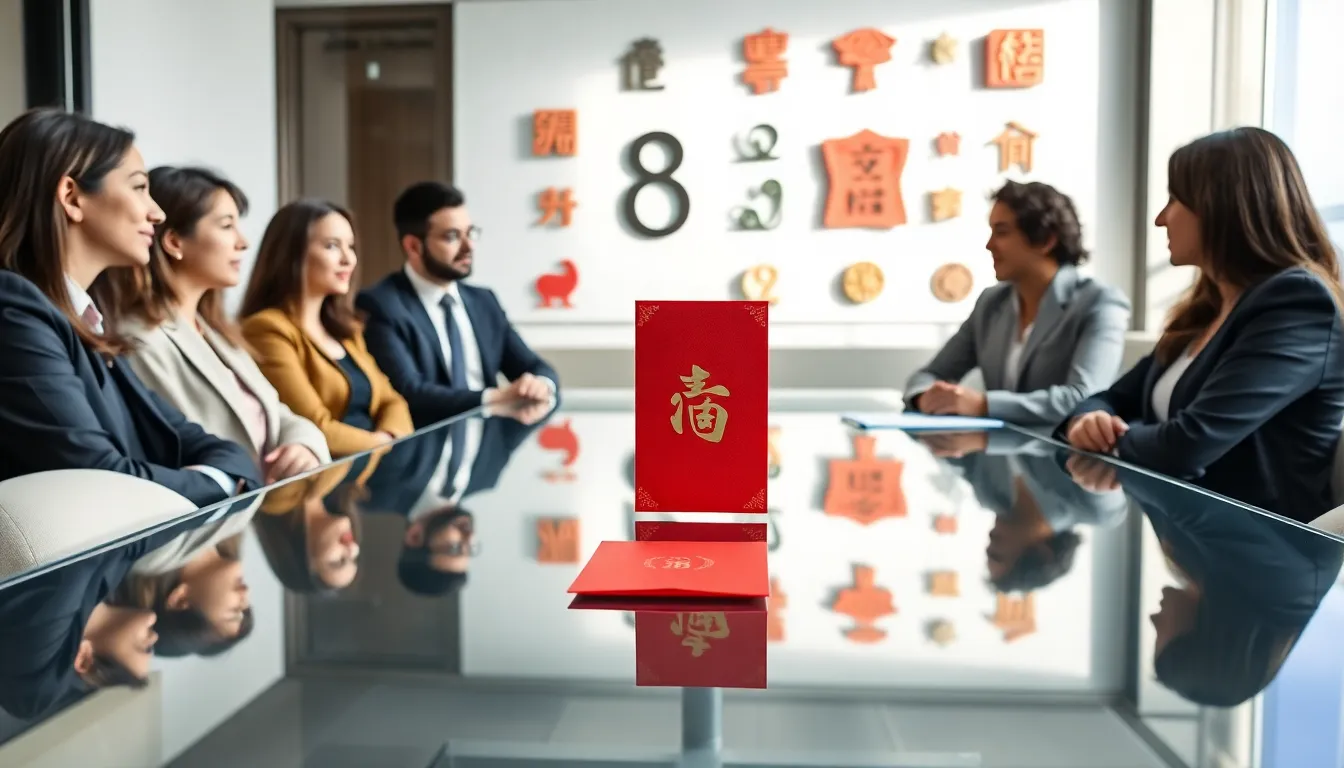Imagine if a simple symbol could unlock doors, attract goodwill, and turn misfortune on its head. Welcome to the intriguing realm of Chinese luck. This concept isn’t just about catchy charms or quirky beliefs: it’s a deeply rooted aspect of Chinese culture that many savvy business minds are now incorporating into their strategies. Lucky numbers, colors, and symbols do more than just brighten a room: they may very well brighten a bottom line. So, let’s jump into how these ancient traditions can breathe new life into modern business practices.
Table of Contents
ToggleUnderstanding Chinese Luck and Its Significance

The Cultural Foundations of Luck in China
Chinese culture is steeped in traditions that date back thousands of years, each woven tightly with the notion of luck. From the ancient philosophies of Confucianism and Taoism to the telling of folklore, luck transcends mere chance in this narrative. It embodies a respect for ancestors, harmony with nature, and the appeal to deities for fortune and well-being.
In many families, discussing ‘lucky’ topics or utilizing auspicious symbols is common during meals or family gatherings, underlining their importance in everyday life. It’s no surprise then that the significance of luck often pervades both personal lives and the business environment.
Common Symbols and Their Meanings
Understanding the symbols of Chinese luck is akin to learning a new language. The color red, for instance, is a celebrated hue, representing joy and fortune. Think about the red envelopes given during the Lunar New Year, filled with money, a tradition aimed at transferring luck from one person to another.
Then there are the numbers. Eight is often regarded as the most fortuitous number because it sounds like the word for ‘wealth’ in Mandarin. Meanwhile, three, because it signifies life, is also favored. Incorporating these symbols into business branding and operations can shift mindsets, encouraging a culture of positivity and growth.
How to Incorporate Chinese Luck in Business
Practical Tips for Embracing Chinese Luck
The first step in incorporating Chinese luck into a business strategy is to understand its relevance. Consider adopting a red color scheme in your office or logo to symbolize prosperity. Think about using auspicious numbers in pricing strategies or marketing materials. For instance, launching a new product on the 8th day of the month or pricing it at a figure that includes or emphasizes the number eight can create a resonance with customers who value these symbols.
Also, add a few elements of Feng Shui to your workspace. Arranging furniture in a way that maintains harmony and balance can significantly influence morale and productivity. Everybody feels better in a harmonious space, think about it.
Building Relationships Through Cultural Understanding
Engaging with Chinese luck concepts isn’t just about hot numbers or vibrant colors: it’s also about relationships. Building trust through cultural respect can translate into stronger business partnerships. If you’re working with Chinese clients or partners, consider acknowledging these cultural elements in meetings. A simple gift, like a piece of art symbolizing prosperity or good fortune, can boost goodwill and foster trust beyond transactional relationships.
Success Stories: Businesses Thriving with Chinese Luck
Case Studies of Successful Implementation
Numerous businesses have successfully embraced Chinese luck concepts, significantly boosting their operations. One such example is the Hong Kong-based company, Swire Properties. They’ve integrated Feng Shui practices into their architectural designs, resulting in a notable increase in sales and customer satisfaction.
Another inspiring case is that of a small restaurant in Shanghai, where the owner uses red decorations and the number eight prominently in the menu prices to create an inviting and prosperous atmosphere. The result? A loyal customer base that feels drawn to the positive energy of the establishment.
These real-world implementations show that trusting in these strategies goes beyond superstition: it taps into a cultural foundation that resonates deeply with many consumers, driving business success.
Lessons Learned and Key Takeaways for Entrepreneurs
Incorporating Chinese luck into a business model offers a unique avenue for entrepreneurs. The takeaway? It’s essential to recognize and respect cultural nuances when engaging in global markets.
Successful integration relies on a genuine understanding of cultural symbols and their significance, not merely as a gimmick, but as a way to foster connections and trust. Using these concepts can lead to more significant engagement rates and customer loyalty. This approach doesn’t just enhance reputation: it potentially transforms the economic landscape of businesses, creating a ripple effect of success.
In practical terms, leveraging elements of Chinese luck can offer entrepreneurs a distinct edge, setting them apart from competitors who may overlook these important cultural aspects.


